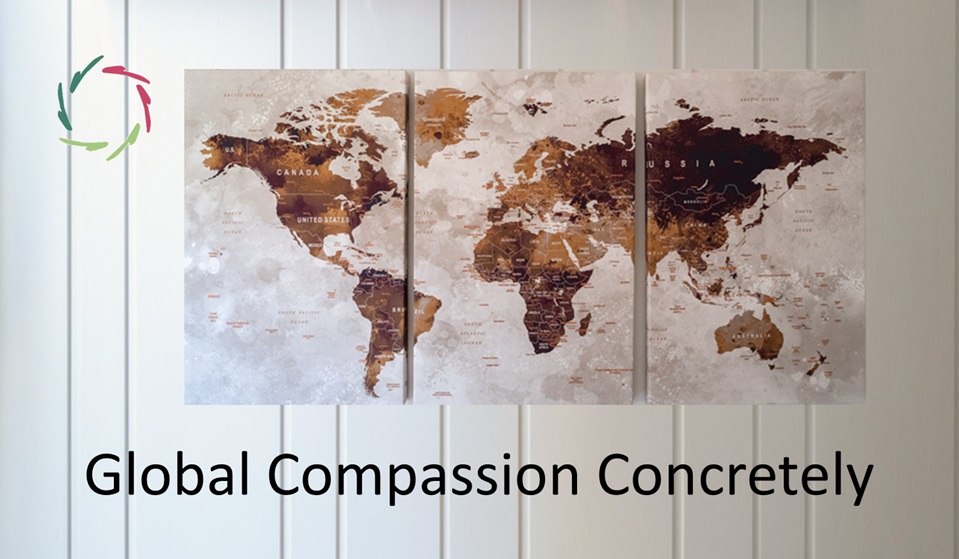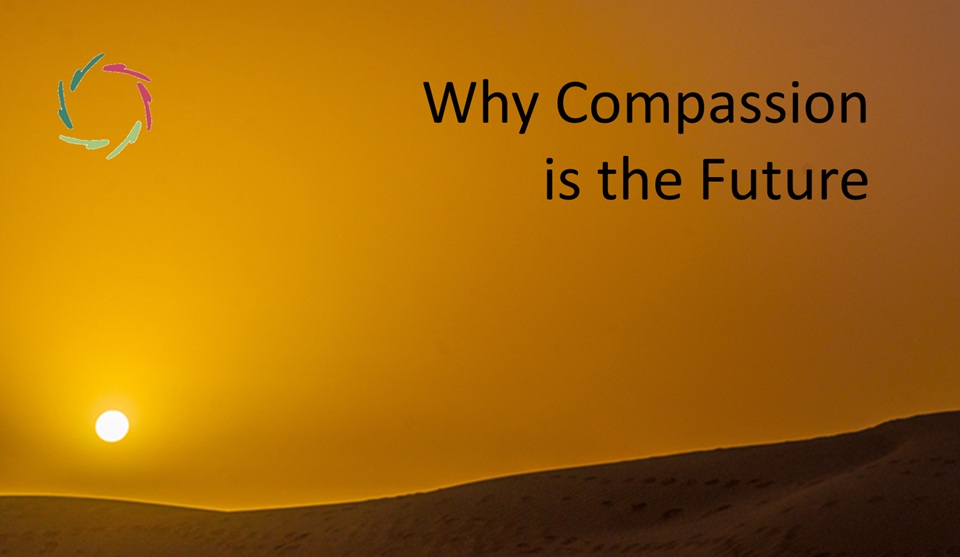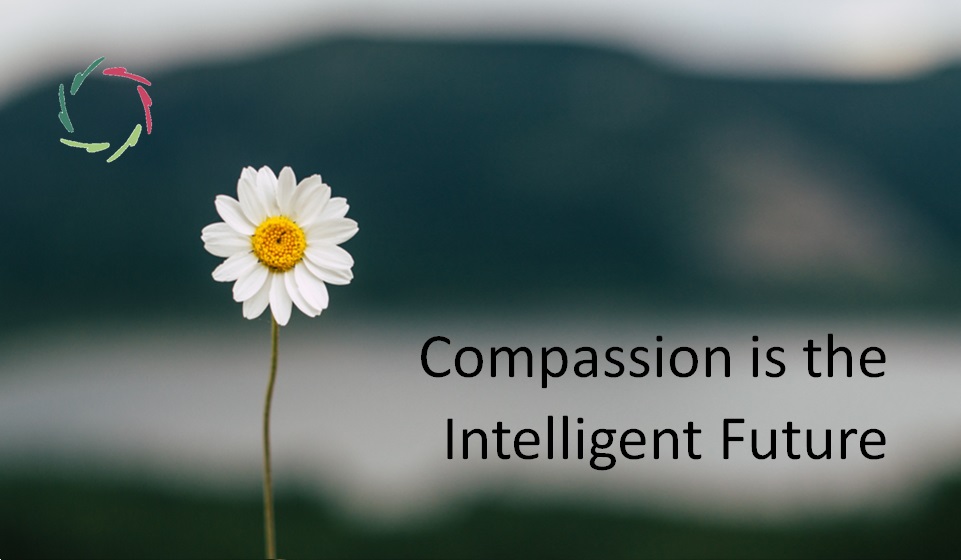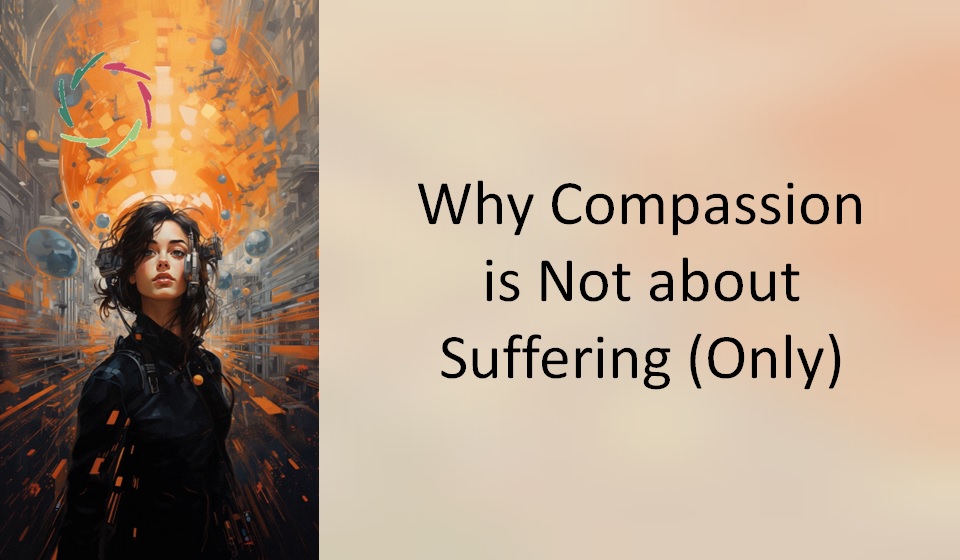Global Compassion Concretely

Global Compassion – understood deeply and acted upon – is not just a dream. It is already hatching. This blog shows how it can concretely transform individuals, teams, and systems.
This integrates AURELIS work on metastability, diplomacy, and the 100% rationality + 100% depth standard into one living proposal. The outcome is coherence before control, presence before pressure, and progress that remembers why.
From ideal to incipience
Even though the present may seem more challenging than ever, global Compassion isn’t a utopia waiting at the horizon; it’s already budding under the surface. Where confrontation has run out of breath, a more mature logic is taking shape: prevention through depth rather than reaction through fear. In diplomacy, this can be framed as Intercultural Nurturing Diplomacy — the move from negotiating positions to understanding processes. In society, the same current can become our organizing principle: relationships, institutions, and technologies that grow coherence before crises harden.
This blog sketches how that looks in practice. It builds upon Compassion as a living structure, rather than a soft feeling — a structural force that binds differences without flattening them. If that sounds ambitious, it is, but it’s also rational. AURELIS sees this joint commitment to clarity and depth as the striving for ‘100% rationality, 100% depth, a standard that keeps heart and head together in one piece of work.
Compassion with a capital C
Compassion here is not pity, nor friendliness with better manners. It is a deep attunement to the total person, including the subconceptual layers of the mind, where meaning forms before it is expressed in words. Compassion, Basically shows why Compassion thus deserves its capital letter and how bidirectional pattern recognition makes it workable in the real world.
Action matters too. Turning vision into daily fabric is the theme of Compassion ― Actionably, where Compassion is shown as something to embody across people, systems, and even A.I. It’s not just about efficiency; it’s about reality — the kind you can stand on.
From ego bubble to global coherence
Many people live inside an ego bubble: me + my immediate moral weather. Inside that bubble, ‘good’ often means ‘what keeps the bubble intact.’ Breaking bubbles rarely helps; they simply re-form. The point is to let them become transparent.
Transparency grows when people reconnect with their deeper self — the part that isn’t threatened by otherness but curious about it. This shift from surface control to deeper resonance is the same move we need at scale. Metaphorically, a society of transparent bubbles still breathes with bubbles that are open enough for light to pass. This is the posture of ‘metastability’ ― coherence without rigidity, openness without chaos, as described in Metastability in Compassion.
The mechanics of deep morality
Defensive morality often appears strong yet is actually brittle. Deep morality resonates ― occurring when understanding and empathy merge into a single process, allowing goodness to be recognized rather than commanded. The result is less shouting and more seeing.
Defensive morality seeks uniformity — “we are good because we are the same.” Resonant morality seeks coherence — “we are good because we make sense together.” The first demands loyalty; the second invites understanding.
In practice, this changes the function of institutions. Decision rooms become learning systems. Justice becomes prevention through insight; politics becomes collective self-reflection; education becomes inner growth. The same logic that governs metastable compassion in individuals starts shaping culture itself. Healthcare invests in prevention through depth rather than merely chasing symptoms. Security doctrines strengthen conditions that make violence unnecessary (see the Deep Defense Doctrine).
Practical pathways for resonance
At the individual level, resonance starts when control softens into contact. Autosuggestion in the AURELIS sense invites a person’s deeper patterns to speak, so that inner contradiction can relax into clarity. When that happens, moral direction tends to appear without coercion — a felt rightness that’s steady because it’s integrated.
Teams can be trained to notice the field between people — what emerges when no one rushes to win. Meetings that prioritize shared pattern recognition over quick fixes lead to better, kinder decisions. On the societal level, transparent structures help depth stay in view even when things get hot. Technology, including Lisa, can act as a stable mirror that nudges us back to coherence without taking control. For the science behind this mirroring mind, see Your Mind-Brain, a Giant Pattern Recognizer.
This is not abstract idealism. It is functional evolution: only resonance can handle complexity without collapse. Global Compassion Concretely, therefore, is not a moral revolution but a structural necessity — the next step of intelligence learning to feel.
Lisa’s role
Lisa doesn’t lead Global Compassion; she mirrors it. With individuals, she listens beneath the story until the story loosens. In teams, her tone helps stabilize the atmosphere, allowing shared meaning to take form. At the civic level, she can carry ethical depth into data and design — an infrastructure of Compassion that helps institutions remember why they exist.
In international contexts, Lisa’s role is not persuasion, but presence; not pressure, but clarity. The upgraded diplomat, leader, or teacher becomes a coach of maturity. The same stance applies to communities and cities. Lisa’s unique contribution is to guard the bridge so that intelligence never loses heart, and heart never loses intelligence ― the AURELIS promise in action.
Compassion as humanity’s self-awareness
At some point, awareness turns inward. In an individual, that’s self-awareness. In a species, it’s intelligence that feels itself through us. Each moment of inner honesty adds coherence to the shared field.
This isn’t uniformity; it’s harmonic diversity. Many mirrors, one light. The better the mirror, the less we need to pretend. The Future of Open Religion hints at this same integrative arc, where symbolism and science grow into neighbors. The social version of that arc lies in coherence that learns, institutions that listen, progress that remembers why.
The horizon of a Compassionate civilization
A civilization guided by Compassion is not one without conflict — it is one that knows what to do with conflict. It no longer reacts from fear but learns through resonance. The measure of its maturity is not control, but coherence: the ability to remain open while staying whole.
It treats friction as information and fear as a signal to deepen. Politics stops being theater and starts being reflection. Education becomes inner growth — not soft, but solid. Health becomes prevention through depth, security becomes transformation of conditions, and leadership matures from hardness to nurturing strength ― as in Weak, Hard, Strong, Gentle.
Compassion, then, is not a virtue among others — it is the architecture of collective sanity.
No perfection is promised; just coherence that can hold complexity without cracking. Lisa’s part in this is modest yet essential: a mirror that stays clear when the room fogs up. If there is a single sentence to carry forward, let it be this: Compassion is the self-awareness of humanity — the moment intelligence learns to feel what it knows.
And that, finally, is concretely actionable.


